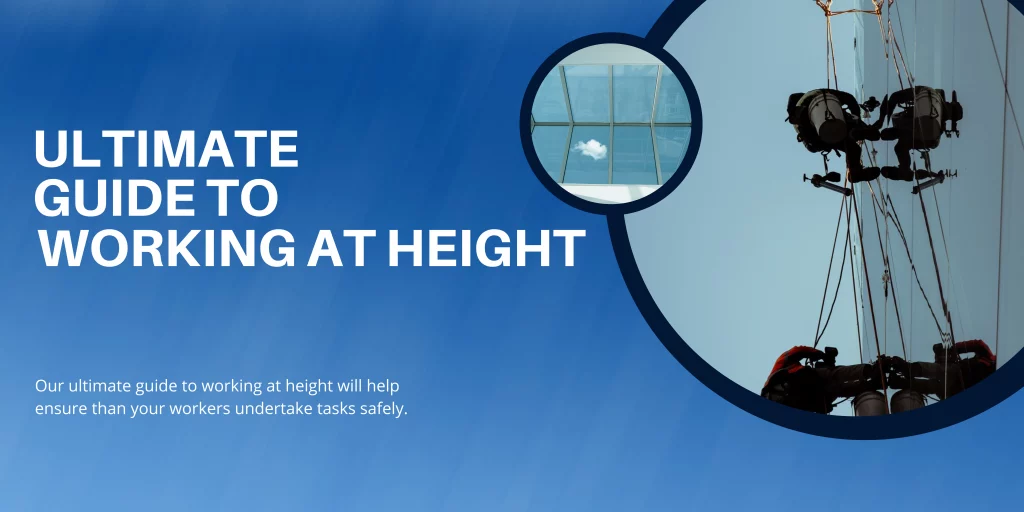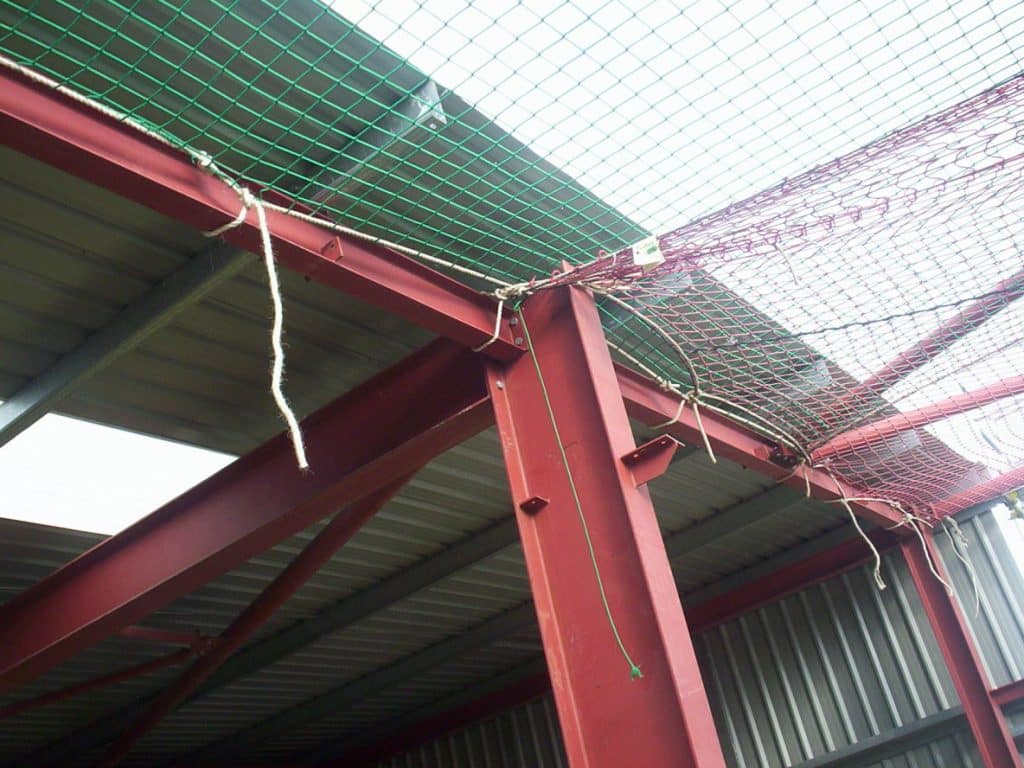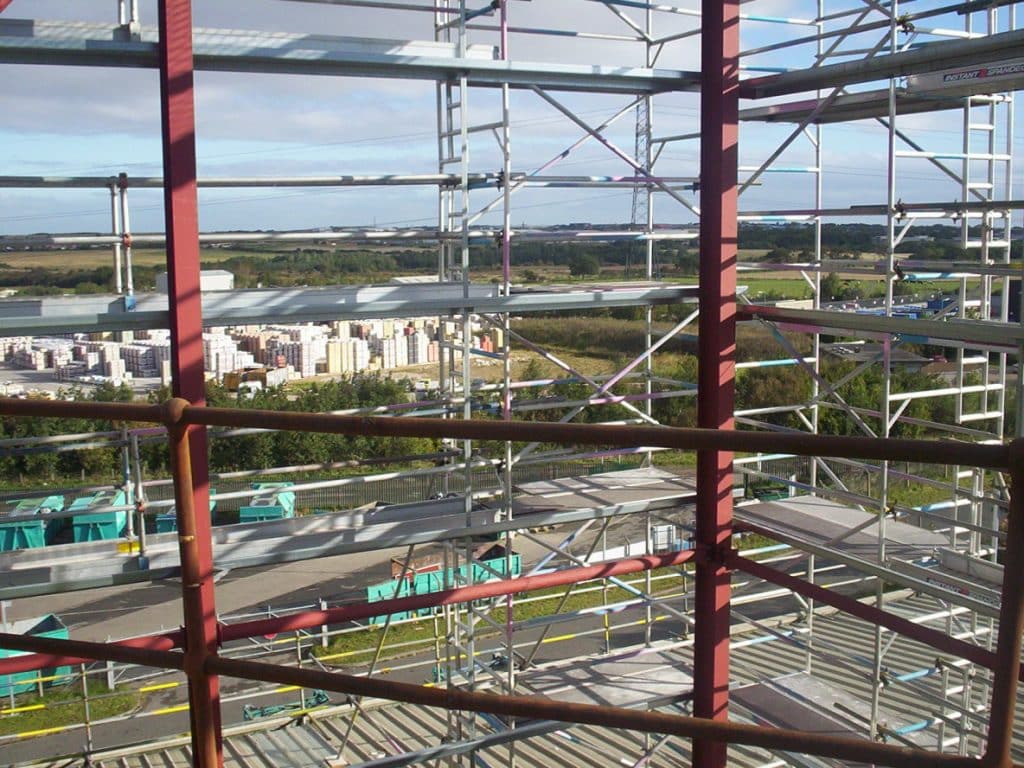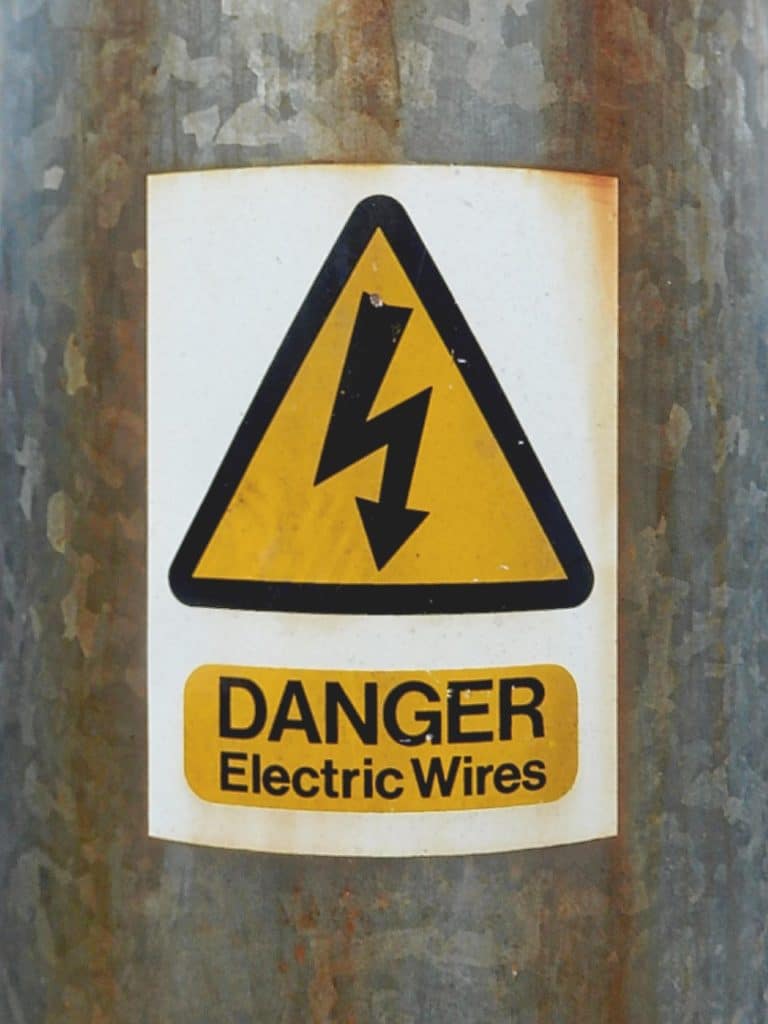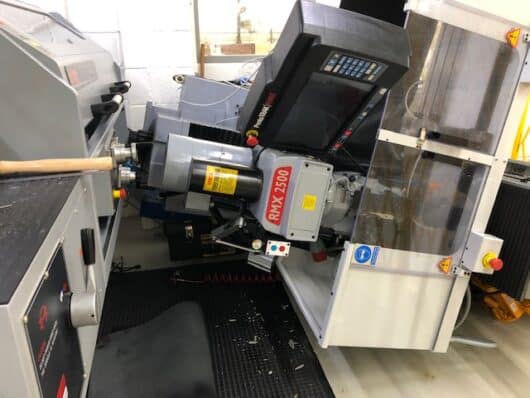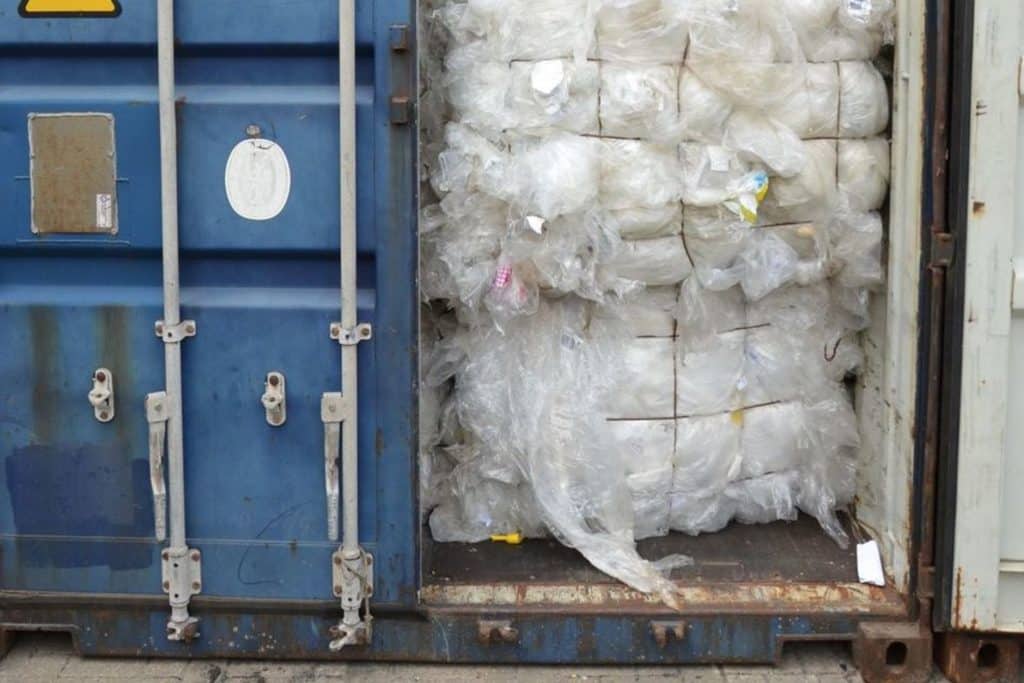If you operate a waste management facility your environmental permit requires you to have a written management system in place and in this article all you need to know about permit management systems, we explain what you need. A management system is simply a set of procedures describing what you will do to minimise the risk of pollution from the activities covered by your environmental permit.
If you have a waste permit that was granted before 6 April 2008 that does not require you to have a working plan or management system, you will still need to manage and operate your waste activity in line with a written management system. If you are applying for:
- a standard rules permit, the risks are identified in the generic risk assessment
- a bespoke permit, you will have identified the risks by carrying out your risk assessment

All you need to know about permit management systems
Your risk assessment will be part of your management system. You must submit a summary of your management system as part of your application if you are applying for a bespoke permit. You do not need to do this if you submit a B6.5 or B6.6 application form for a standalone water discharge or a groundwater activity, but you must have your management system in place before you start operating.
You do not have to submit a summary of your management system if you are applying for standard rules permits, but you must have your management system in place before you start operating. Your management system will normally be reviewed on the pre-operation site visit by an officer from the Environment Agency.
Where you are applying for a standard rules permit for waste activities and plan to store combustible waste, you will need to submit a fire prevention plan as part of your application. Our consultants can provide advice and support in developing a fire prevention plan and have successfully submitted many plans on behalf of clients which have been approved by the Environment Agency. If you require advice and support with your fire prevention plan, please contact one of the Ashbrooke team.
Once you are operating you must implement your management system, or you will be in breach of your permit.
What to put in your permit management system and how to organise it
The amount of information you will need in your management system will depend on how complicated and risky your activities are. If your permit is for low-risk activities, for example a small sewage treatment works, your management system can be simple. If you have a number of permits they may be covered by an overall management system. You may carry out certain things in the same way at different permitted sites and you may also have site specific procedures.
You need to be able to explain to the regulator what happens at each site and which parts of the overall management system apply to each facility. For example, at some sites you may need to show you are carrying out additional measures to prevent pollution because they are nearer to sensitive locations than others. Our consultants recently supported a client who was near to a site of special scientific interest (SSSI) which required additional measures in both the management system and the fire prevention plan.
How to develop your permit management system
You can develop and maintain your own management system or use an environmental management system scheme or standard.
If you have a larger site or carry out a more complex activity (like installations and waste operations dealing with hazardous waste), the Environment Agency prefers management systems based on a recognised standard and independently checked by an accredited body.
An environmental management system may be certified against a standard such as ISO 14001. The organisation or individual carrying out certification may be accredited by a National Accreditation Body such as the UK Accreditation Service (UKAS).
Using an accredited certified management system is not a guarantee that you will meet all of your permit conditions. You are still responsible for implementing your system effectively and making sure you comply with each permit condition. This is where our consultants can provide value to your operations in ensuring that any system is relevant to your permit operation and is efficient and effective.
However, the independent checks carried out for an accredited certified scheme or standard should result in greater confidence in your management system, and in your management of compliance. This may lead to fewer checks from the Environment Agency under the operator and performance risk assessment methodology (OPRA). Independent inspections and audits will also provide some assurance to the company board and senior managers that procedures are implemented and being followed in practice.
When applying for an environmental permit you will need to detail on the application form if you are using any of the following as the basis for your management system:
- ISO 14001:2015
- Green Dragon
- phases 1 to 5 of British Standard (BS) 8555
- BS EN ISO 14005:2019
- EMAS Global
Prepare your permit site infrastructure plan
If you are applying for a permit for a standalone water discharge activity or a point source standalone groundwater activity, you only need to read the section on ‘Water discharge and groundwater activity’.
Your management system must include a plan of your site, drawn to scale. The plan must highlight where you do the activities covered by your permits (and any exemptions you have registered). The plan can become incredibly detailed as the regulator lists all the features which must be included. Often you may need to produce a number of plans in order to include all the features that are required.
Waste, installations and mining waste permits
So far in this article, all you need to know about permit management systems, we have looks at the general requirements of a system. However, there are some specific requirements for waste installations and mining permits. In these cases your plan must also show any:
- buildings, and other main constructions, like treatment plants, incinerators, storage silos and security fences
- storage facilities for hazardous materials like oil and fuel tanks, chemical stores, waste materials
- location of items for use in accidents and emergencies, like absorbants for chemical spills
- entrances and exits that can be used by emergency services
- points designed to control pollution, for example inspection or monitoring points
- trade effluent or sewage effluent treatment plants
- effluent discharge points
- land that you believe is contaminated, for example areas of your site that have previously been used for industrial purposes
Permit sites near vulnerable locations
Your plan must also show areas particularly vulnerable to pollution that are on or near to your site, for example:
- rivers or streams
- groundwater used for drinking water
- residential, commercial or industrial premises
- areas where wildlife is vulnerable or protected
Use the Environment Agency’s risk assessment guide to help you think about areas that are vulnerable to pollution. If having read this all you need to know about permit management systems article you are unsure what to include, our consultants can provide further advice and support.
Drainage
The plan must show your foul and combined drainage facilities marked in red and your surface water drainage, facilities marked in blue.
It must also show:
- the direction of flow of the water in the drain
- the location of discharge points to the sewer, watercourse or soakaway
- the location of manhole covers and drains
- the location of stop and diverter valves and interceptors
Water, gas, electricity
Your plan must show the location of mains water, gas and electricity supplies on your site, including:
- the mains water stop tap
- gas and electric isolating valves and switches
- the routes for gas, electricity and water supplies around your site – electric wiring and gas and water pipes must be labelled on the plan
Water discharge and groundwater activity
If you are applying for a permit for a standalone water discharge activity or a point source standalone groundwater activity your site plan must show:
- your wastewater treatment plant
- monitoring points – the locations from which you will take samples to check for contaminants or pollutant substances as required by your permit
- the location of emergency equipment
- the location of any mitigation measures referred to in your management system
- the outlet to surface water (standalone water discharges only)
- the infiltration system (standalone groundwater activity only)
If you are applying for a permit for a standalone groundwater activity where you are land spreading, your site plan must show:
- the field locations for spreading
- monitoring points – the locations from which you will check your discharge for contaminants or pollutant substances as required by your permit
- the location of emergency equipment
- the locations of any pollutant storage areas linked to your permit
Permit site operations
As a permit holder, you must break down the operations that will be carried out on your site during start up, normal operation and shut down, into a list of activities and processes, for example unloading waste, storing waste, incinerating waste.
For waste, mining waste, and installations, you should list the wastes that will be produced by each activity or process.
Finally, list the steps you will take to prevent or minimise risks to the environment from each activity or process and type of waste. Be specific about the actions you will carry out to do this.
For water discharge and point source groundwater activities, this will normally be the operation of a wastewater treatment works or effluent treatment equipment that is part of your activity and included in the permit.
If you manage, treat or dispose of waste
If you are a waste operator you must include a waste storage plan that states:
- the longest amount of time that you will store each type of waste
- how you will make sure you will not exceed these time limits – you need to consider your emissions when deciding how long you can store types of waste for
- the maximum amount of each type of waste you will store in terms of volume
- the maximum height of each storage pile on site
- how you will identify the specific types of waste you are storing
- how you will separate different types of waste if required, for example how far apart you will keep waste types that cannot be mixed
- how you will make sure your site only takes waste that your permit allows you to store
Fire prevention plans
If you need a permit for waste activities and you plan to store combustible waste, you will need to write a fire prevention plan and submit it with your application. This must explain how you would prevent fire at your site or manage risks from fire if one occurs. You should note that following the increase in waste facility fires in recent years, the Environment Agency has significantly strengthened its guidance on fire prevention plans and any plan submitted for approval must be robust.
The regulator also charged an assessment fee per hour where existing permit operators need to produce a fire prevention plan. If plans are not approved on the first submission, the costs can increase significantly as the regulator re-assesses each version submitted for approval.
Our consultants can provide advice and support in developing a fire prevention plan and have successfully submitted many plans on behalf of clients which have been approved by the Environment Agency. If you require advice and support with your fire prevention plan please contact one of the Ashbrooke team.
Site and equipment maintenance plan
You need a plan for how you will maintain the infrastructure of your site and any machinery.
You must maintain any machinery according to the manufacturers’ or suppliers’ recommendations (for example, following the instructions and guidelines of any manuals that came with your equipment). The maintenance plan is also referred to as a maintenance schedule.
You will need to record each time you carry out maintenance, for example, each time you check the calibration of monitoring equipment to make sure it meets the manufacturer’s recommendations. Records can be specific to the equipment, on a daily or weekly checklist or for very small operations, you could record maintenance tasks in a site diary.
Contingency plans
You need a plan for how you will minimise the impact on the environment of any:
- breakdowns
- enforced shutdowns
- any other changes in normal operations, for example due to extreme weather
Accident prevention and management plan
You need a plan for dealing with any incidents or events that could result in a pollution or where you are not able to comply with your permit. The plan must identify potential accidents, for example:
- equipment breakdowns
- enforced shutdowns
- fires
- vandalism
- flooding
- any other incident which causes an unexpected change to normal operations, such as extreme weather
For each potential incident, it must also state the:
- likelihood of the accident happening
- consequences of the accident happening
- measures you’ll take to avoid the accident happening
- measures you’ll take to minimise the impact if the accident does happen
Your accident plan must also say how you will record, investigate and respond to accidents or breaches of your permit.
Your accident plan must also include:
- the date it was reviewed
- when it will next be reviewed
- a list of emergency contacts and how to reach them
- a list of substances stored at your site, and your storage facilities
- forms to record accidents on
Consider taking the following actions, if you think they are relevant to the operations you carry out at your site:
- make emergency services aware of your activities
- take out insurance to cover the cost of clean-up following an accident
- check whether you are in a flood risk area and sign up for flood warnings
- develop a system to allow access to important information away from your site
Online security: protect your business
You can take some simple steps to protect your business against online security threats. Good online security will help make sure your business does not cause pollution. Any pollution that does occur is your responsibility as the permit holder.
See the National Cyber Security Centre website for guidance about online security which is becoming an increased risk for many businesses. This will be particularly important where you have waste processing or environmental monitoring equipment controlled by computers.
Contact information for the public
If you have a waste or an installation permit, you must display a notice board at or near the site entrance telling the public about the site. It must include:
- the permit holder’s name (company name at least)
- an emergency contact name and telephone number
- a statement that the site is permitted by the Environment Agency
- the permit number
- Environment Agency telephone number 03708 506506 and the incident hotline 0800 807060 (or another number we subsequently tell you about in writing)
A notice board is optional for other permits and will depend on whether you consider that the public will need to see emergency contact information at your site.
A changing climate to consideration
The Met Office climate projections for the UK suggest that we can expect:
- higher average temperatures – particularly in summer and winter
- more heat waves and hot days
- rising sea levels
- changes in rainfall patterns and intensity
- more storms
It is important you consider if a changing climate could affect your operations, including how this might affect your ability to comply with your permit.
Plan for negative climate impacts on how you operate now, during and after any transition to net zero. Include the associated risks to local communities and the environment. These impacts and risks may change over the lifetime of the activity.
Plan for the impacts of multiple events, such as supply chain failure and extreme weather, happening at the same time.
Plan to complete changes to ensure your operations remain resilient at stages along a climate projection of at least a 2°C global mean temperature rise by 2050. Do this by following and regularly updating your climate change risk assessment. Also, assess what further requirements may be necessary along a projected 4°C rise by 2100. You do not need to assess risks or plan actions beyond the end of the life of your activity.
To anticipate and prevent risks to local communities and to the environment, plan to test the effectiveness of your:
- actions
- policies
- procedures
- assessments
Finally, plan timely reviews and revisions in response to new information or learning. Use the adapting to climate change: industry sector examples for your risk assessment when developing or reviewing your management system. You may also wish to follow or adopt ISO 14090:2019 and associated standards to help you to do this.
Complaints procedure
You need a procedure that records:
- any complaints you receive in relation to activities covered by your permit (for example complaints from neighbours about noise, odour or dust from your site)
- how you investigate those complaints
- any actions taken as a result of complaints
Managing staff competence and training records
You need to have enough staff and resources to make sure the site is run effectively in order to comply with your permit. Your management system needs to explain who is responsible for what procedures and who is technically competent.
For each of your managers, staff and contractors make a list of any roles they carry out that relate to activities covered by your permit. You will also need a procedure to:
- check your staff and contractors have taken the training or qualifications required for the work they do
- record any training, refresher training or qualifications taken by your staff or contractors
If you have a permit for a waste, mining waste or installations permit you also need to look at legal operator and competence requirements. Our consultants can provide on site training for staff on all aspects of environmental permit compliance and ISO 14001 requirements. If you require training advice and support, please contact one of our team.
Keeping records
You must keep any records required by your permit. In some cases, the permit will tell you how long to keep a record for. Otherwise, you must consider how long you’ll need to keep different records for (and write this in your management system). You must keep records to show how your management system is being implemented in line with the requirements of your permit and this guide. You need to keep:
- permits issued to the site
- other legal requirements
- your risk assessment
- all management system plans
- any plans required by the application or permit depending on your type of activity (for example odour management plan at waste sites)
- all operating procedures
- staff competence and training (for example qualifications, courses attended)
- emissions and any other monitoring undertaken (for example water samples)
- compliance checks, findings of investigation and actions taken
- complaints made, findings of investigation and actions taken
- audits of management system, findings (reports) and actions taken
- management reviews and changes made to the management system
- where applicable, certification audit reports and any actions carried out
You also need to include copies of your plans with your management system if:
- your permit requires you to implement an approved plan
- you have been asked to do this because there’s a problem at your site
If you manage, treat or dispose of waste
If you are a waste operator you must record the following for each delivery of waste to your site:
- its quantity (weight or volume)
- its List of Waste (LoW) Code
- its origin (for example, the location the waste sent from)
- the identity of the producer of the waste (for example the company name)
- the date the waste arrives at your site
- the date the waste was first produced, if the waste is likely to cause odour
- any quarantined materials that are part of the delivery, and what you did with them
You must also:
- keep records to show that you are meeting your duty of care requirements as a business that produces waste
- comply with the site record and return requirements for hazardous waste
Waste, mining waste or installations
If you have a permit for waste, mining waste or installations you will need to have a site condition report to record the condition of land or quality of groundwater on your site.
Keep this up to date through the life of your permit and include the following information:
- details of any historic spills or contamination (incidents that took place before you began operating) and what was done in response to those incidents
- evidence of the effectiveness of any measures you have taken to protect land or groundwater since you started operating
If you want to cancel (surrender) your permit, you will need to show you have taken the necessary measures to avoid any pollution risk from your activities.
You also need to show that you have returned the site to a satisfactory state. This means that the condition of land and groundwater has not deteriorated as a result of your activities. Our consultants can provide advice and support drafting site condition plans for permit applications as well as updating condition plans for site permit surrenders. If you require site condition plan advice and support, please contact one of our team.
Individual subject management plans
Sites for waste, mining waste or installations may have to include the following plans:
- an odour management plan
- an emissions management plan
- a noise and vibration management plan
- a pests management plan
It is also worth noting that the Environment Agency when assessing the above plans, may use different officers to assess each individual plan. Therefore, the Agency will require odour, emissions, noise and pest plans to be separate standalone documents. Unfortunately, this does result in duplication and additional work.
Agency permit application assessment officers could be based anywhere in England and will often not be familiar with the local area around your site, so it is important to include all relevant details.
Jacksons can provide advice and support in drafting these types of management plans for permit applications and permit modifications. If you require advice and support, please contact one of our team.
Review your permit management system
You must have a procedure for checking you are complying with your permit, procedures and management system. Record what checks are carried out, who did them and what action was taken.
You must review and update your management system:
- when you make changes to your site, operations or equipment that affect the activities covered by your permit, for example if you install a new boiler
- whenever you apply to change (‘vary’) your permit
- after any accident, complaint or breach of your permit
- if you encounter a new environmental problem or issue, and have implemented new control measures to control it
If you have ISO 14001, then it is a requirement to carry out a management review at set periods, often annually, in order to review your environmental objectives, the results of internal and external audits, etc.
You must keep a record of changes to your management system, particularly major changes such as:
- a change to the maximum amount of waste stored on your site
- a new noise screen
- new waste treatment equipment, for example a Trommel
- implementation of new control measures
The Environment Agency may also review your management system and make recommendations for improvements after any accident, permit breach or other incident. It may also ask you to improve your management system if it thinks you have not identified or minimised risks from pollution. Our consultants have considerable experience in liaising with the Environment Agency on behalf of clients regarding environmental permit issues.
Site closure
It is no longer possible to simply hand your environmental permit back when you stop operating. You must submit an application to surrender your permit to the Environment Agency. You will have a period of site closure from when you stop operating until you are able to cancel (surrender) your permit if you have a permit for a:
- landfill
- category A mining waste facility
During this time, you will need to continue to monitor emissions from your site.
You will need to submit the site closure parts of the site condition report when you stop operating.
Make sure people understand what you do
Your staff must have access to and understand any sections of the management system that deal with activities they carry out. It is up to you how you do this, for example whether you print the system out, or provide electronic copies.
You must be able to show the Environment Agency your management system if asked. If you have an overarching management system for a number of sites, you can provide both:
- an overview or summary of the whole system
- copies of the sections that relate to the activity type or aspect of the management system that the Environment Agency has asked about
Consider whether you need to provide information to interested parties such as neighbours and your local community to explain how you manage your activities to comply with your permit.
Conclusion
If you operate a waste management facility your environmental permit requires you to have a written management system in place and in this article all you need to know about permit management systems, we explain what you need. A management system is simply a set of procedures describing what you will do to minimise the risk of pollution from the activities covered by your environmental permit.
If you are applying for an environmental permit, you will need to detail on the application form if you are using any of the recognised standards as the basis for your management system. If you have a larger site or carry out a more complex activity (like installations and waste operations dealing with hazardous waste), the Environment Agency prefers management systems based on a recognised standard and independently checked by an accredited body.
The management system must include all the elements detailed in the Environment Agency’s guidance as well as separate plans and drawings to support the permit application. If you require advice and support with your permit application or modification, please contact one of the Ashbrooke team.

